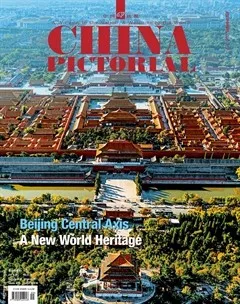New Life of Old Guild Halls
Scattered in the criss- crossing lanes and alleys along the Central Axis of Beijing are numerous old buildings including former residences of historical celebrities and time-honored shops which together form the multi-faceted appeal of the ancient capital. Among them is a unique type of architectural establishments: guild halls.
In the past, guild halls were constructed by people from the same hometown or guild in big cities for gatherings or temporary residency. Guild halls emerged in Beijing during the early Ming Dynasty (1368-1644). Gradually, this type of establishments spread nationwide. Research shows that Beijing’s guild halls peaked in the mid-Qing Dynasty (1644-1911). Back then, about 1,000 guild halls could be found in the city, with tens of thousands of rooms in total.
The emergence of guild halls, to a large extent, was associated with the imperial examinations. During the Ming and Qing dynasties, students from all over the country gathered in Beijing to participate in the imperial examinations. They built guild halls in Xuannan, an area south of Xuanwu Gate, and conducted academic exchange there, fostering famous Xuannan Culture. During the Qing Dynasty, Xuannan became a popular place for officials, students, and businesspeople from elsewhere to stay in Beijing. Over time, diverse commercial districts such as Dashilan, Caishikou, Liulichang, and Tianqiao emerged there to nurture the commercial culture of the ancient capital.
For centuries, hosting traditional opera performances has been a key function of guild halls. For this reason, guild halls facilitated integration of diverse regional cultures. In 1790, to celebrate the 80th birthday of Emperor Qianlong of the Qing Dynasty, four famous Anhui Opera troupes came to Beijing to perform for the emperor. Following that, troupes of various genres of opera performed in Huguang Guild Hall, Anhui Guild Hall, Yangping Guild Hall, and Zhengyici Theater (also known as Zhejiang Banking Guild Hall), giving birth to Peking Opera.

These guild halls played a significant role in shaping the cultural genes of Beijing. Unlike the royal culture in the inner city of old Beijing, guild halls were linked to the development of bureaucratic and imperial examination systems, commercial prosperity, and accelerated population migration. They also facilitated the formation of the ancient capital’s unique literati culture, business culture, and theatrical culture, becoming major fountains of inspiration for Beijing’s inclusive and vigorous culture.
In recent years, more and more old guild halls have reopened to the public. Some serve as venues for performances such as traditional operas and xiangsheng(cross talks) while others have been converted into cultural spaces such as teahouses and museums.

Linfen Guild Hall, built in the Ming Dynasty, became the Beijing Guild Hall Culture Museum in 2017, where visitors can enjoy cultural relics related to the history of guild halls. West Damochang Street near Qianmen area, where Linfen Guild Hall is located, transformed into a cultural street combining traditional buildings and modern elements, enabling tourists to enjoy the “quiet life” even near the bustling commercial areas west of Qianmen.
Since its reopening in January 2024, Huguang Guild Hall has presented Peking Opera and other folk arts on a regular basis while hosting exhibitions related to traditional opera. In the future, it aims to become a “core internet-famous Peking Opera theater” through integrated development of exhibitions, academic activities, and catering.

Through redesign and renovation, many old guild halls have regained life as parts of their respective neighborhoods, injecting vitality into Beijing.

